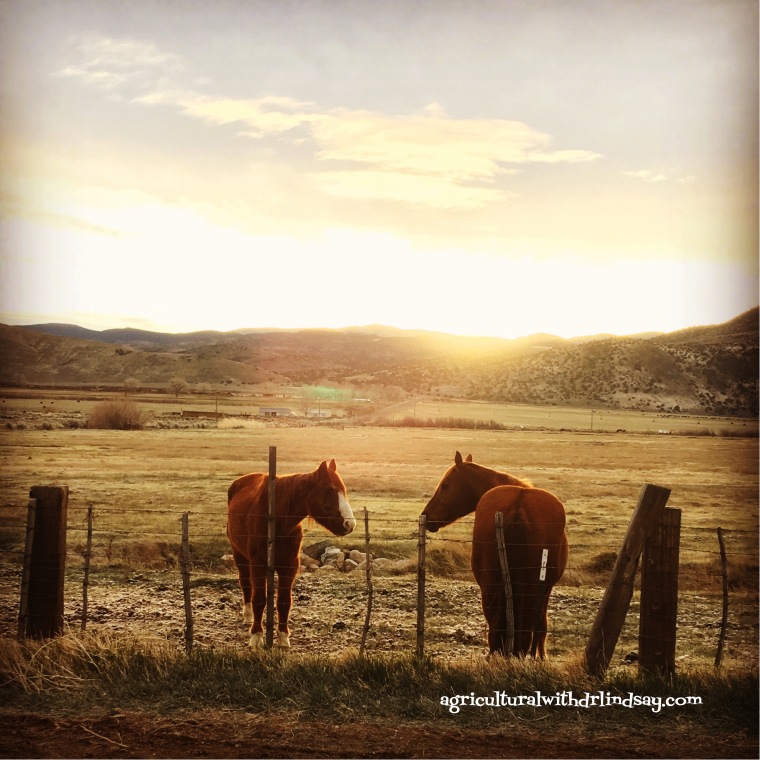
Dr. Lindsay can also be found on:
– Twitter/Instagram (AgWithDrLindsay)
– Facebook
– Pinterest
Lambing (when the ewes (aka mamas) are having their babies) is always a fun and exciting season, albeit exhausting too. My parents are involved in the day-to-day tasks as the sheep ranchers, I get to help on weekends and when there are bigger tasks to do, like when we wean, tag, and worm the lambs.
Today I want to talk about what happens in the first few hours and days of the lambs’ life.
There are visual signs from the ewe when she is nearing lambing (I will go into that in another post), we keep a close eye on the ewes and check on them several times a day. Sometimes if we catch them early in the birthing process we will put them in their own private pen, and sometimes they have their lamb(s) in the bigger shed or outdoors, and we later move them into a private pen. We really try not to hover over them while they are birthing as it makes them nervous, and can delay the process. Instead we let them do their thing for about 30 minutes, then check on them, give them another 30 and check on them again. At this point if no progress is made we catch them and perform a pelvic exam to ensure the lamb is coming normally. A normal birth in the livestock world is both front feet and head coming first. Any other version of that usually results in us intervening.
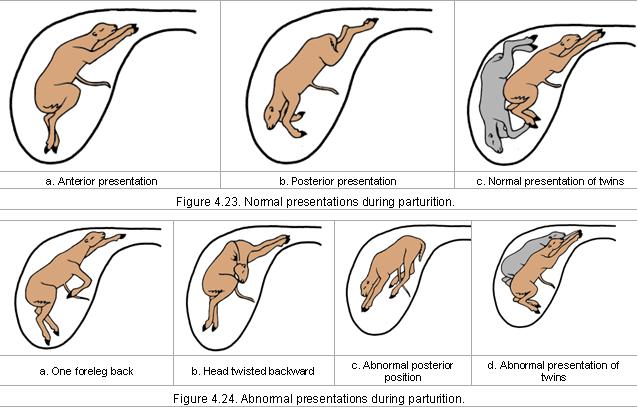
Also, depending on the age of the ewe and the size of the lamb she may need assistance having her lamb too. Unless there are complications we try to let her have the lamb on her own.
Once the lamb has been born, the ewe’s natural instinct is to get up and start licking the lamb off. This is a bonding process, but more importantly this dries the lamb, which is essential for survival if they are born outside in cold temperatures. At this point, if we see the birth we check to make sure that the nasal passages of the lamb(s) are clear and free of the amniotic sack or any any other blockages.
Almost immediately the lamb will try to start standing on wobbly legs to nurse. It is important that the lamb get the first milk (aka colostrum), which helps them get a good start on life. We watch closely to make sure they have figured out how to nurse. Sometimes they need a little help learning to latch on, and sometimes the ewe has so much milk that her teat is too big for the lamb to latch on, making it difficult for the lamb to nurse. Once the lamb gets older it has no problem keeping up with the ewe’s milk supply, but in the early days it can be challenging. Also in the first few hours we put iodine on the lamb’s navel, which helps decrease the chance of infection or illness. If the ewe is going to have another lamb, she will usually start birthing again shortly after licking the first one off. Sometimes however, she has a second one quickly and doesn’t have a chance to lick the first one off immediately. We hope that she comes back to clean both of them after the second one is born, if not we try to dry it off with an old towel.
As mentioned before, if the ewe and her lamb(s) are not already in a separate pen, they get moved to one. All pens have fresh straw, water for the ewe, and a heat lamp for the lamb. Also, when the ewe has finished lambing and taken care of her lambs (i.e. licked them off and let them nurse) we then provide her with hay, so can get her energy back up after the tough experience.
Depending on weather and how the lamb is doing, they will stay in this pen for about three days. Before they are turned out with the rest of the flock, the ewe receives her spring vaccinations and a paint number is put on her back that matches the number on the lamb’s eartag. The lamb will be weighed, given a unique eartag (that matches the ewe’s back number and her eartag number), and an elastrator is put on the tail. An elastrator looks like a green rubber cheerio. Essentially it cuts off the blood supply to the tail (or if applicable, the testicles – but that elastrator doesn’t go on until they get a little bit older).
At this point the ewe and her lamb are ready to join the rest of the flock. It doesn’t take long before the lambs are running and playing with other lambs and then eating hay out of the lamb feeders. At our ranch, the ewes and lambs are locked up at night to help keep them safe from predators (i.e. coyotes). We are careful to make sure these new little babies are in this space every night, as they start to learn the routine.
What didn’t I cover that you want to know more about?

Dr. Lindsay can also be found on:
– Twitter/Instagram (agwithdrlindsay)
– Facebook
– Pinterest
This past weekend I headed out to the ranch to help wean lambs. Weaning just means that they have become old enough and/or weigh enough to be able to flourish on their own, so they are separated from their mothers. For lambs, our rule of thumb is 60 days or 60 pounds, meaning they must be at least 60 days old to be weaned or weigh at least 60 pounds.
The ewes (the mamas) can start getting thin at this stage because these bigger lambs are still nursing and the ewes have a hard time maintaining their body weight and condition with these big lambs nursing them. The lambs at this age and stage are also eating hay and can graze, so it is time for them to be weaned. Plus, in a few short weeks excited 4-H members will come and select the lambs they will raise and show this year.
We sorted the lambs into two pens, one pen held lambs that met the 60/60 requirements and the other pen held the lambs that still need more time. Twenty-nine lambs were sorted into our wean pen and everyone else was let out to go eat their morning hay.
Luckily we started early enough in the morning the ground was still frozen and we could get the horse trailer backed up to the shed. We have gotten so much moisture in the last month that there is mud that is at least ankle deep. Once the horse trailer was in place we let the lambs out of their pen and they ran right to the trailer and loaded (yay for this going so well).
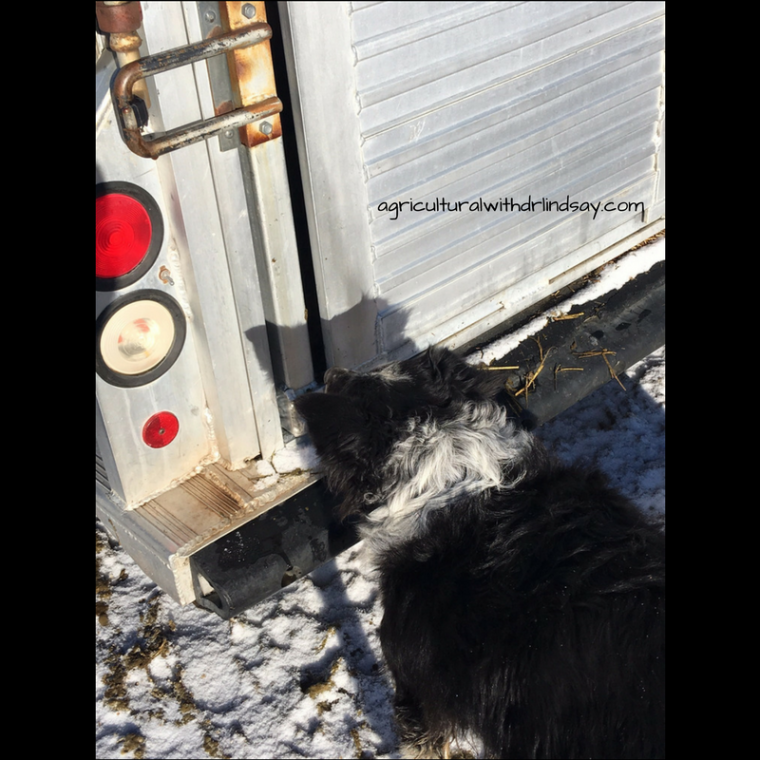
Now since we had them in a confined space (i.e. the horse trailer) we wormed them (they can get internal parasites from drinking out of running water sources, worming helps keep them healthy) and they got their Scrapie tags. Scrapie (pronounced scrape – e) is a fatal, degenerative disease of the central nervous system of sheep and goats, of which there is no cure. Other animal species can get a form of this prion misfolding disease too. In cattle it is bovine spongiform encephalopathy (BSE or “Mad Cow Disease”), in people it is variant Creutzfeldt-Jakob Disease (vCJD). The USDA (United States Department of Agriculture) has a national scrapie eradication program, and each state department of agriculture has a premise identification program. In the premises ID program, each animal rancher/farmer verifies what their address is and what species they raise. Before sheep (or goats) can leave where they were born they must be tagged with one of these tags, if there ever was a Scrapie outbreak, the animal could be traced back to its home ranch/farm. Fun fact – it is illegal to remove the Scrapie tag before an animal is harvested. That tag must remain in the animal’s ear for its entire life.

Once each lamb had been wormed and tagged with the Scrapie tag, the lambs were taken to their new home. A pen near where they had always been. They will stay in this pen until they go to a new home with the 4-H members, until any replacement ewes are big and mature enough to rejoin the flock, or they are harvested for meat. In this pen they have access to alfalfa hay, grain, and fresh clean water, as well as two sheds.

It usually takes a couple of days for the lambs and ewes to recover from weaning. The lambs learn how to eat hay and grain out of feeders and the ewes have a chance to start putting some weight back on that they may have lost while nursing. If the ewes get too thin they have a hard time cycling and breeding again.
Weaning lambs is a lot of work that requires all of us to get it done. But it is also rewarding because you can really see how well the lambs are doing and have pride in knowing that under your care they will reach their full potential.
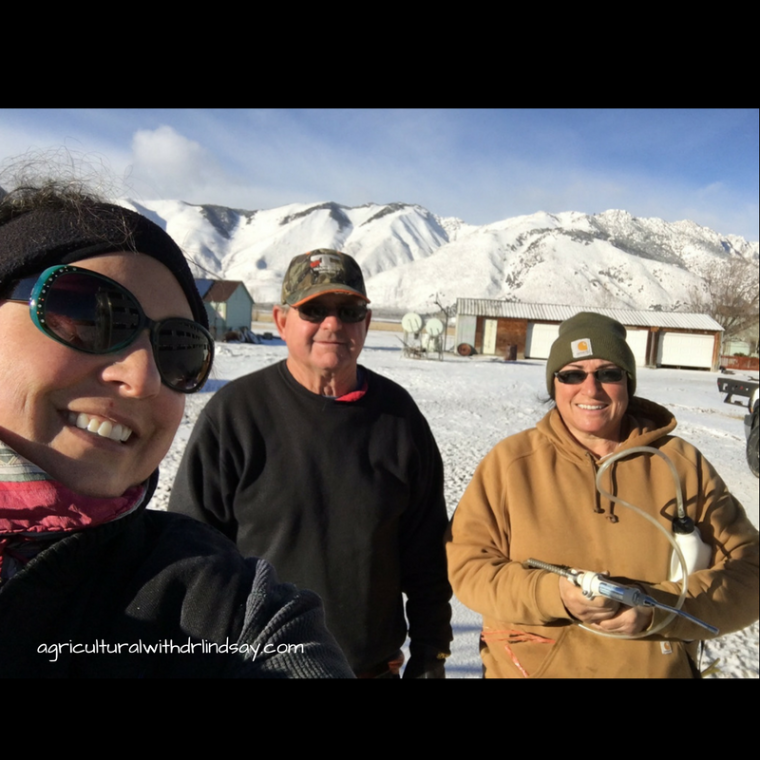
——————–
Dr. Lindsay can also be found on:
– Twitter/Instagram (agwithdrlindsay)
– Facebook
– Pinterest
Happy 2017! I cannot believe how quickly 2016 came and went. So many people talked about what a terrible year it was. I thought it was a pretty great year. I thought I would take a moment to reflect on some of the 2016 adventures.
In December 2015 I announced in The Book of Life I had accepted a job with the University of Nevada Cooperative Extension and would be moving back home closer to my family.
We had some time in-between leaving Nebraska and when my new job started, so naturally we stayed with my parents. We were involved daily with the chores and animals on the ranch. And boy did it get cold, caring for baby lambs in freezing temperatures was certainly a priority.
The weather actually ended up delaying our moving truck, and needless to say we had to camp out in our apartment for about a week until our stuff arrived. It was kind of awkward to come home and night and not have anything (nothing) to sit on. But we survived and spent the next months unpacking…
We spent much of January and February settling into a new normal. The Hubs looked for work, and was actually able to get employment with the same security company he was with in Nebraska. We went to the ranch when weather permitted and enjoyed being able to help out my folks.
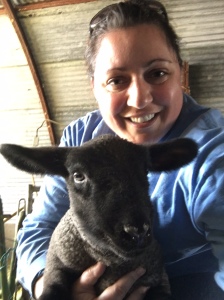
After almost six years to the date, the Hubs became an American citizen. Whew what a process that was. If it wasn’t for a fantastic immigration lawyer (and money, and time) we could not have done it. Hindsight is always something, but we put together a list of 10 immigration tips in case you ever need to go through the process yourself (or know someone who is), as knowing some of these things upfront would have been helpful.
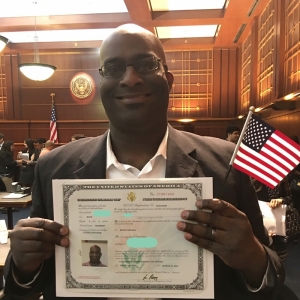
I became an aunt! My Mom and I made several trips to Wyoming to help my sister get ready for his birth, then to meet the little guy, then to spoil and cuddle him. He is seriously the most adorable kid ever… ok, I am probably biased, but he is pretty great, and cute. The whole family was able to spend Labor Day (for the folks’ 40th wedding anniversary) and Christmas together. We are eagerly anticipating the big cake smash birthday coming up.
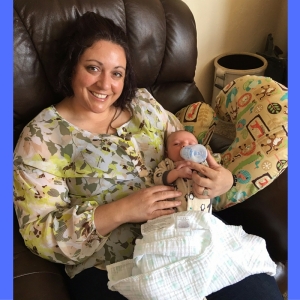
In March, we headed south and took advantage of the Death Valley Super Bloom. Neither of us had ever been there, but enjoyed the few days we had. Not only was it an excellent place to visit, but one we certainly will return to. Next time we go, we decided we would camp in the park instead of driving to the motel in a nearby town. We would also watch all of the sunrises and sunsets, as the ones we saw were fantastic. And we probably wouldn’t try to see every.single.thing in the park in one visit.
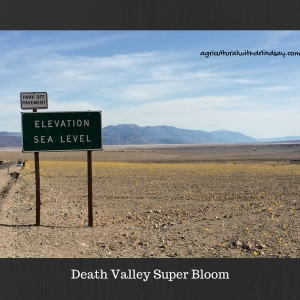
If you know anything about me from social media, you know I like to cook (and eat). I experimented a lot with clay pot cooking, and tried cornish game hens, meatloaf, and chicken with 40 cloves of garlic.
In July my office hosted the first-ever youth summer day camp. We spent a week highlighting some of the projects youth can do in 4-H and explored the great outdoors. We had so much fun that we will continue this camp and talked about adding a winter one as well.
Living in the Eastern Sierra Nevada mountain range gave us the chance to hike, swim, and explore areas near us. We didn’t make near enough time to enjoy as much scenic beauty and we wanted, but have been building our 2017 list of places to visit.

In the fall I had a ton of travel. I was fortunate enough to attend meetings and conferences where I could catch up with friends, as well as make new friends and learn new skills from events like BloggyCon and Top of the Class. I also was able to squeeze in a couple of fun trips too.
We bought a house! Apartment living was not for us. So we bit the bullet and bought our first home. Surprisingly, the process went much, much better in real life than I had imagined it would go. Yes, it seems we ended 2016 much the same way we started 2016, packing and moving. And let me just say that going through a move twice in one year is way too much. Two months later I am finally at the stage where I am hanging stuff on the walls and decorating.
2016 was a year of change and challenge, new beginnings, exploration, and family. I saw my family more in the past year than I had in the last six years. It was great being able to go 4-wheeling in the mountains, celebrate life events and holidays, and just hang out. On the work front, getting adjust to a completely new and different system has taken time, but we are once again full-staffed and everyone has learned their roles and responsibilities. I look forward to what 2017 will bring, and wish you all the best.
Dr. Lindsay can also be found on:
– Twitter/Instagram (agwithdrlindsay)
– Facebook
– Pinterest
My blogging took a backseat this year after moving from Nebraska to Nevada and getting settled in out west. Resettling took more time than I thought, but that is a post for next year 🙂
I look forward to getting back on track and bringing great stuff to you in 2017. Until then, I wanted to share some of the best posts of 2016, as well as some all-time favorites.
Top 5 posts written in 2016…
Reader all-time favorites…
And because I just like these…
I hope you have a happy and healthy New Year!
Dr. Lindsay can also be found on:
– Twitter/Instagram (agwithdrlindsay)
– Facebook
– Pinterest
It is no secret that I am passionate about agriculture. I am a fourth generation agriculturalist, educated in various agricultural sciences, and I love the advancements that science and technology are bringing forward in agriculture and food production daily. I try to share my love of ag on all of my social media platforms.
Recently, I had a great interview with the wonderful people at CropLife International. CropLife International’s mission speaks to me, as it reads: We champion the role of agricultural innovations in crop protection and plant biotechnology to support and advance sustainable agriculture.
To read the interview check out Using social media to “agvocate” for farmers and scientists. You may also want to check out other blog posts with great information.
Croplife International can also be found on Twitter, Instagram, and Facebook.
**Note: I was note paid or provided compensation in anyway for this interview or to share information about CropLife International. I just happen to believe in their mission, and we share a common passion for agriculture and the farmers and agriculturalists around the world.
Dr. Lindsay can also be found on:
– Twitter/Instagram (agwithdrlindsay)
– Facebook
– Pinterest
We have all experienced inconsiderate and dangerous drivers, but in the agricultural community that risk can be even greater when large, heavy equipment is involved. Recently, a longtime family friend was telling our local branch of Cattlewomen about an experience that happened to her daughter’s friend. Please read the editorial that Annalyn Settelmeyer submitted to the local papers.
Our teenage daughter, niece and their friends are helping on the hay crew this summer. My daughter’s 15 year old friend was driving a tractor and hay tedder through Genoa yesterday. At the main intersection stop sign, her tractor stalled. The tractor has fail safes and is difficult to restart in a fast manner. People behind her were upset started flipping her off, calling her a moron and questioning her parent’s linage. She had never been yelled at or called these names before and got flustered which in turn, exacerbated the situation. She finally managed to get the tractor going and headed to Jacks Valley.
I grew up near Genoa and was ashamed of such bully-like behavior. I would like to invite them to come drive a tractor. People often talk about moving to the area because of the rural lifestyle, green open spaces, cattle and eagles in the fields. We are an agriculture based community and you will often see farm equipment. This summer while you’re traveling around the valley, please remember we farmers and ranchers have a narrow window to get hay crops up for our cattle and hay customers. This means more motorists and farming equipment sharing the roads.
According to the National Safety Council 1/3 of all tractor accidents happen on public roads. Farm equipment moves slowly. A car traveling 55 mph toward a tractor can close a gap the length of a football field (300 ft.) in FIVE seconds. Our equipment is only moving 15 mph so please slow down as soon as you see a farm implement and the slow moving equipment sign. Our equipment is heavy and difficult to stop. We need room, don’t assume we can see you. We don’t have the opportunity to move off the edge of the roads safely allowing others to get by.
The key to safety with farm equipment: caution and patience. Please slow down. Don’t follow too closely. Never cut between the equipment and the escort vehicle if there is one, the escort is there to protect you and us. Don’t pass until it is clearly safe. Often it will be difficult or impossible to see where we are entering a field. Please pay attention to our blinkers and hand signals. Yes, when making that turn we do have to swing wide. Yield to large wide equipment coming the opposite direction as well, our equipment is heaver and bigger than most passenger vehicles.
We understand we are delaying you, but please understand we don’t want to be on the road any more than we have too. We are being as careful as we can. The main issue is when others are impatient. We have to move in a diligent way to remain safe. We are doing our jobs in proving food for our families and yours. Please remember, it is someone’s dad, mom, son or daughter driving that tractor. We are your neighbors, your kids coach, your politician, your church member, and your pharmacist’s daughter. We share a community together, please, for a short window each year, share the roads with us as well. We love our teenage daughter, niece and their friends who are working hay crews this summer and are passing on not only a tradition, but a lifestyle that has been in this valley for generations. Thank you so much!
If you ever encounter a piece of agricultural equipment, a combine, or livestock in the road please proceed with caution. These pieces of equipment are large and heavy, they cannot stop quickly. Ask yourself if passing the agricultural equipment in a dangerous spot is worth dying for or killing someone else? Is something so important that you can’t wait a couple more minutes to pass?
Dr. Lindsay can also be found on:
– Twitter/Instagram (agwithdrlindsay)
– Facebook
– Pinterest
I cannot believe June is wrapping up! Where has the time gone? I have been terrible at blogging over the last few months, and for that I apologize. My calendar is freeing up, and I am going to get back in the routine. Until then, I thought I would give you an update on how the big move and career change from Nebraska to Nevada is going.
In case you need a refresher, I announced in The Book of Life: Closing and Opening Chapters that I had made the big decision to leave Nebraska Extension and head west to start a career with Nevada Extension. A main reason for making this drastic move was getting back close to the family ranch and my family here. It has been a lot of fun to celebrate holidays and special occasions with my family again. We have probably seen each other more in the last six months than we have in six years!
We (the Hubs, the cat, and I) left Nebraska mid-December(ish). We picked my Dad up in Denver on day 2, and made our way across Colorado and Utah. We continued to have great weather, so on day 3 we took Nevada’s loneliest highway (Highway 50) across Nevada. When you have a roadtrip of ~1,600 miles you hope it is uneventful, and it was. We were blessed by the travel Gods.
Our belongings and their transportation to Nevada weren’t so lucky. We knew when we planned the move that it could take our stuff three to ten days to arrive. Little did we know that storm after storm across the country would derail those plans. In the end it was about 20 days later when our stuff arrived. Since I had to start work in that time I had to buy a few pairs of slacks and blouses, and we camped out in the apartment for about a week. We were sure glad to see the movers arrive.
Once we got our stuff and got unpacked we hit the ground running. A long journey finally came to an end when the Hubs became an official American citizen. You can read more at My story: 10 Immigration tips when marrying a non-American. Almost six years to the date of when he arrived on his fiance visa, he was raising his right hand and swearing allegiance to the USA. It was a great day, and one that we have waited for for a long time.

Meanwhile, back at my office… My office manager retired about 10 days after I arrived and our part-time office assistant went on vacation. It was a little stressful to not only learn what I was supposed to do, but to also learn about our budget, how to pay bills, and the other 749 things these great ladies had been doing. Happily, we have since hired a new and fabulous Office Manager and our part-time office assistant is back. It feels great to have all of the pieces in place and to be moving forward again. I immediately partnered up with the Chamber of Commerce to offer Social Media classes to local businesses, and it has gone over very well.
At the ranch, there was another great lamb crop born. Even though we had several large snow storms our family was prepared to handle them and to provide the best care for all of the animals. Read more about how we Care for baby lambs in freezing temperatures. My Mom sold several lambs to the 4-H members, and they did a great job raising them and showed them in May at the Nevada Jr. Livestock Show.
This past spring was a busy one as my Dad had a knee replaced. Considering the extent of the surgery, his recovery has been great. Just weeks after the replacement he was driving the skidsteer again – hard to keep a good rancher down. And even more exciting, my nephew was born. My Mom and I have made several trips to go visit him and his parents, and we anxiously await for their visit here at the end of the summer. I think it is safe to say he has all of wrapped around his chubby little fingers.

As for fun… Well the Hubs and I took advantage of the nice weather and took a long weekend to Death Valley Super Bloom… A photo journal. Neither of us had ever been there, and it was fantastic. We are already planning our next visit – when the cooler temperatures return. We are also less than 45 minutes from Lake Tahoe, so we have been enjoying that scenic beauty and all that the lake has to offer.

As far as Cali cat, she handled the drive like a champ. However, the entire moving experience traumatized her. My parents have two indoor cats that are not welcoming to other cats, so Cali stayed with my Grandpa until our stuff arrived and we got unpacked (about 3 weeks). He loved the company, but she was not happy with me at all. Once we brought her home it took another month for her to get settled in. She is finally back to her old self now and is not looking forward to moving any time soon.
While there was a lot of other things that happened in the last six months, these are some of the major highlights. I look forward to getting back into a regular blogging routine. As usual, it will be a mixture of current research findings and events, interesting ag stories, and introductions to the people who grow and raise our food.
Dr. Lindsay can also be found on:
– Twitter/Instagram (agwithdrlindsay)
– Facebook
– Pinterest
A bummer (in the agricultural world) is an animal that doesn’t have a mom, so it is cared for and fed by humans. Just over two years ago my Mom had a bummer lamb that we called “BumBum”. I wrote about BumBum at No holiday ‘bummer” for this gal.
BumBum never got another sheep mom, so my parents fed her and cared for her until she was self-sufficient and could eat hay, grass, and grain. She grew well and became a nice little ewe. My Mom decided to keep her as a replacement ewe. In Bummer lamb to replacement ewe: Transformation Tuesday I shared that story.
I am happy to report that BumBum has recently become a mom! She loves her lamb and is doing a good job raising it. It has been fun to watch BumBum make this transition over the last two years.

Dr. Lindsay can also be found on:
– Twitter/Instagram (agwithdrlindsay)
– Facebook
– Pinterest